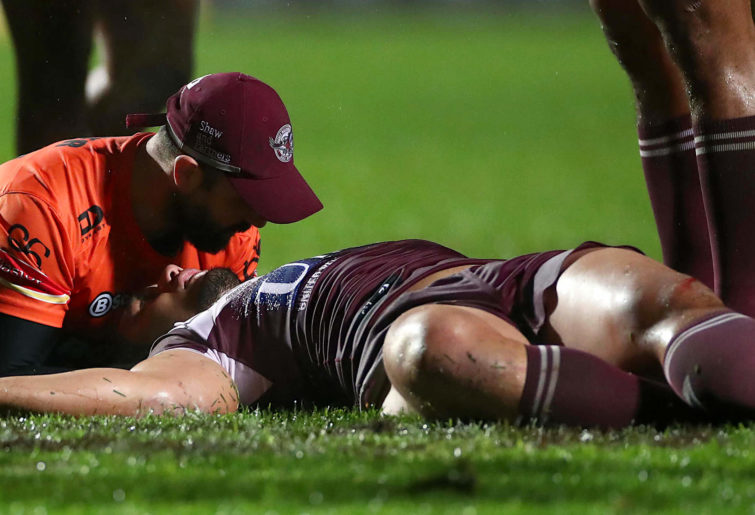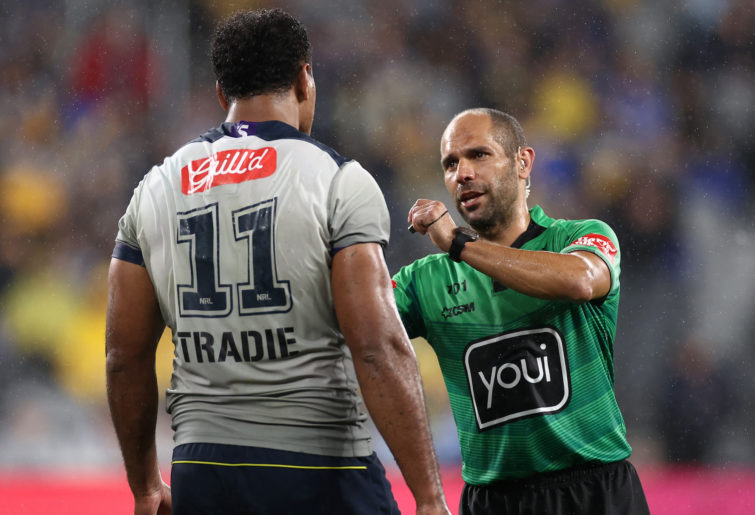If you’re anything like me, at the beginning of each season you optimistically scroll through your favourite team’s roster, take account of recruitment gains and losses, look at both your rising stars and the fading heroes, and familiarise yourself with the new coach’s resume.
This gives you a pretty good idea where your team might finish at the end of the year – hopefully in the top eight, or at the very least, a few positions ahead of last year’s result.
But it can be a total waste of time, as the deciding factor in your team’s success or otherwise won’t just be the names appearing in your team’s roster, but how many of them will make it through the season unscathed.
Now, more than ever before, it seems that injuries – and in particular injuries to key players – will decide not only the outcome of individual games, but also where your team will finish. You need either a lot of luck, a deep and talented roster, or preferably both.
The 2020 season appeared to be a high water mark for injuries, particularly of the season-ending kind, and many players injured last year are still struggling to get onto the field in 2021. Players like Kotoni Staggs (Broncos), Jorge Taufua (Sea Eagles), Shaun Johnson (Sharks), Dale Finucane, Harry Grant and Brenko Lee (Storm), Blake Green, Kalyn Ponga and Lachlan Fitzgibbon (Knights), Boyd Cordner and Billy Smith (Roosters), and Shawn Blore (Tigers) are all yet to take the field this year due to injuries suffered last season.

(Photo by Cameron Spencer/Getty Images)
Unfortunately, the start to the 2021 season isn’t shaping up much better than last year. Roosters Luke Keary and Jake Friend look like they’re both gone for the season. Manly’s Tom Trbojevic’s horror injury run continues (no pun intended). Euan Aitken and Chanel Harris-Tavita will miss a large part of Warriors’ season.
Bradman Best from the Knights is out indefinitely. Jason Taumalomo is still out for the Cowboys while it looks like Michael Morgan’s future career is in jeopardy. The Dragons’ Ben Hunt could be out for up to ten weeks while Cameron McInnes is gone for the season.
Both Waqa Blake and Ryan Matterson are currently missing from the Eels’ line-up. Panthers stars Dylan Edwards and Apisai Koroisau could both be out of action for another five weeks. The Roosters will probably be without halves Lachlan Lam and Adam Keighran until Round 10, and Wests’ Billy Walters is out indefinitely.
I’ve left quite a few injured players out of the above lists, and no doubt when the dust settles from Round 3 there’ll be at least another half dozen players added to the injured list. That’s a lot of talented players and salary cap dollars sitting on the sideline, and some teams will really struggle to impress or even be competitive from here.
The above reads like a casualty list from the early days of the Gallipoli campaign, and is both unsustainable and the end of 2021 premiership aspirations for some clubs. Having depth to cover injuries is one thing, but adequately replacing key players or multiple losses is another.
Various reasons have been given in recent times for what seems to be an increasingly high injury rate, including:
• The increased speed of the game (rule changes over the last couple of years have significantly increased the speed of the game and tired players are more likely to suffer injuries).
• The increased size of the current-day players (the bigger the players, the harder the impact. Players are certainly getting bigger every year – some of today’s halfbacks like Adam Doueihi and Nathan Cleary are bigger than some of the feared forwards enforcers from the past like Noel Kelly and Rod Reddy).
• The change in tackling style from one-on-one to the ball-and-all gang tackle (the higher the tackle impact point, the more defenders in the tackle, and the more wrestle and twisting, the more likelihood of injury).
• The advances in the HIA rules (concussed players are now more likely to both be taken off the field following injury, and sit out additional games to recover. The old days of shaking off the concussion, completing the game, and turning out next week are virtually gone).

(Photo by Cameron Spencer/Getty Images)
It’s hard to argue with any of these reasons for the increase in injuries, and for all intents and purposes the higher injury rate is probably here to stay.
As a consequence, the NRL will need to look at strategies to ensure that roster depletion doesn’t lead to affected clubs becoming totally uncompetitive. Some of the available options would be:
• Increase squad sizes from the current 30 players to say 35 players. Obviously, there will be salary cap implications for this option.
• Make player loans between clubs easier and more flexible.
• Allow clubs to more easily add players to their declared roster in the event of season-ending injuries. Once again, there will be salary cap considerations to overcome.
Another critical issue with the apparent rise in injuries is the effect it has on individual matches, particularly where multiple players from the same team suffer game-ending injuries, leaving their team short-handed and with a depleted bench for the remainder of the match.
In the first six games of Round 3 for example, it could be argued that the result of three games (Rabbitohs-Roosters, Eels-Sharks and Warriors-Raiders) were decided as much by the injuries received by players from the Roosters, Raiders and Sharks, as the good form of their opponents.
No one except the most one-eyed fan wants to watch a one-sided game caused by injuries. What used to be a 13-on-13 tussle is now very much a 17-player-per-side game, and with the increased speed of the game, having one or two players out of the 17 can be difficult to manage, particularly where game-ending injuries occur early in the match.
Adding to this issue is the reluctance of referees to send players off when they put an opponent out of the game. A good case in point is that Melbourne’s Felise Kaufusi recently put Parramatta’s Ryan Matterson out of the game, was not sent off, and went on to play the full 80 minutes.

(Photo by Cameron Spencer/Getty Images)
It’s been suggested in some quarters that an additional bench player be added just to cover situations where a player can’t continue because of a HIA situation but I have two issues with that:
1. Coaches are likely to abuse the rule.
2. The same ability to replace a player should exist whether it is for HIA reasons, or for any other injury.
The solution to the problem is relatively simple, and that is to increase the size of the bench from four to seven players, while retaining the current number of available interchanges. Coaches may choose not to involve all players from the bench if they wish, but would have adequate replacements available in the event of a high injury rate.
Clearly, something needs to be done to provide teams with the opportunity to remain competitive each week, and wherever possible, to allow adequate players and replacements to alleviate the impact of the increasing injury toll.































































































